Fannie Mae 2011 Annual Report Download - page 13
Download and view the complete annual report
Please find page 13 of the 2011 Fannie Mae annual report below. You can navigate through the pages in the report by either clicking on the pages listed below, or by using the keyword search tool below to find specific information within the annual report.-
 1
1 -
 2
2 -
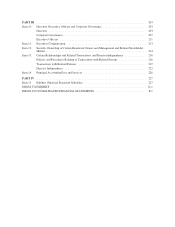 3
3 -
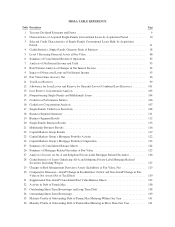 4
4 -
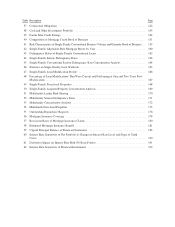 5
5 -
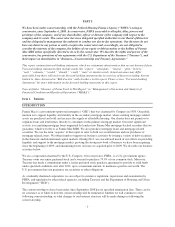 6
6 -
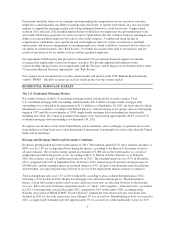 7
7 -
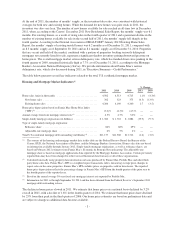 8
8 -
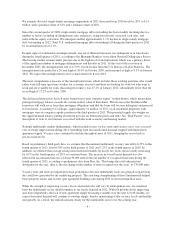 9
9 -
 10
10 -
 11
11 -
 12
12 -
 13
13 -
 14
14 -
 15
15 -
 16
16 -
 17
17 -
 18
18 -
 19
19 -
 20
20 -
 21
21 -
 22
22 -
 23
23 -
 24
24 -
 25
25 -
 26
26 -
 27
27 -
 28
28 -
 29
29 -
 30
30 -
 31
31 -
 32
32 -
 33
33 -
 34
34 -
 35
35 -
 36
36 -
 37
37 -
 38
38 -
 39
39 -
 40
40 -
 41
41 -
 42
42 -
 43
43 -
 44
44 -
 45
45 -
 46
46 -
 47
47 -
 48
48 -
 49
49 -
 50
50 -
 51
51 -
 52
52 -
 53
53 -
 54
54 -
 55
55 -
 56
56 -
 57
57 -
 58
58 -
 59
59 -
 60
60 -
 61
61 -
 62
62 -
 63
63 -
 64
64 -
 65
65 -
 66
66 -
 67
67 -
 68
68 -
 69
69 -
 70
70 -
 71
71 -
 72
72 -
 73
73 -
 74
74 -
 75
75 -
 76
76 -
 77
77 -
 78
78 -
 79
79 -
 80
80 -
 81
81 -
 82
82 -
 83
83 -
 84
84 -
 85
85 -
 86
86 -
 87
87 -
 88
88 -
 89
89 -
 90
90 -
 91
91 -
 92
92 -
 93
93 -
 94
94 -
 95
95 -
 96
96 -
 97
97 -
 98
98 -
 99
99 -
 100
100 -
 101
101 -
 102
102 -
 103
103 -
 104
104 -
 105
105 -
 106
106 -
 107
107 -
 108
108 -
 109
109 -
 110
110 -
 111
111 -
 112
112 -
 113
113 -
 114
114 -
 115
115 -
 116
116 -
 117
117 -
 118
118 -
 119
119 -
 120
120 -
 121
121 -
 122
122 -
 123
123 -
 124
124 -
 125
125 -
 126
126 -
 127
127 -
 128
128 -
 129
129 -
 130
130 -
 131
131 -
 132
132 -
 133
133 -
 134
134 -
 135
135 -
 136
136 -
 137
137 -
 138
138 -
 139
139 -
 140
140 -
 141
141 -
 142
142 -
 143
143 -
 144
144 -
 145
145 -
 146
146 -
 147
147 -
 148
148 -
 149
149 -
 150
150 -
 151
151 -
 152
152 -
 153
153 -
 154
154 -
 155
155 -
 156
156 -
 157
157 -
 158
158 -
 159
159 -
 160
160 -
 161
161 -
 162
162 -
 163
163 -
 164
164 -
 165
165 -
 166
166 -
 167
167 -
 168
168 -
 169
169 -
 170
170 -
 171
171 -
 172
172 -
 173
173 -
 174
174 -
 175
175 -
 176
176 -
 177
177 -
 178
178 -
 179
179 -
 180
180 -
 181
181 -
 182
182 -
 183
183 -
 184
184 -
 185
185 -
 186
186 -
 187
187 -
 188
188 -
 189
189 -
 190
190 -
 191
191 -
 192
192 -
 193
193 -
 194
194 -
 195
195 -
 196
196 -
 197
197 -
 198
198 -
 199
199 -
 200
200 -
 201
201 -
 202
202 -
 203
203 -
 204
204 -
 205
205 -
 206
206 -
 207
207 -
 208
208 -
 209
209 -
 210
210 -
 211
211 -
 212
212 -
 213
213 -
 214
214 -
 215
215 -
 216
216 -
 217
217 -
 218
218 -
 219
219 -
 220
220 -
 221
221 -
 222
222 -
 223
223 -
 224
224 -
 225
225 -
 226
226 -
 227
227 -
 228
228 -
 229
229 -
 230
230 -
 231
231 -
 232
232 -
 233
233 -
 234
234 -
 235
235 -
 236
236 -
 237
237 -
 238
238 -
 239
239 -
 240
240 -
 241
241 -
 242
242 -
 243
243 -
 244
244 -
 245
245 -
 246
246 -
 247
247 -
 248
248 -
 249
249 -
 250
250 -
 251
251 -
 252
252 -
 253
253 -
 254
254 -
 255
255 -
 256
256 -
 257
257 -
 258
258 -
 259
259 -
 260
260 -
 261
261 -
 262
262 -
 263
263 -
 264
264 -
 265
265 -
 266
266 -
 267
267 -
 268
268 -
 269
269 -
 270
270 -
 271
271 -
 272
272 -
 273
273 -
 274
274 -
 275
275 -
 276
276 -
 277
277 -
 278
278 -
 279
279 -
 280
280 -
 281
281 -
 282
282 -
 283
283 -
 284
284 -
 285
285 -
 286
286 -
 287
287 -
 288
288 -
 289
289 -
 290
290 -
 291
291 -
 292
292 -
 293
293 -
 294
294 -
 295
295 -
 296
296 -
 297
297 -
 298
298 -
 299
299 -
 300
300 -
 301
301 -
 302
302 -
 303
303 -
 304
304 -
 305
305 -
 306
306 -
 307
307 -
 308
308 -
 309
309 -
 310
310 -
 311
311 -
 312
312 -
 313
313 -
 314
314 -
 315
315 -
 316
316 -
 317
317 -
 318
318 -
 319
319 -
 320
320 -
 321
321 -
 322
322 -
 323
323 -
 324
324 -
 325
325 -
 326
326 -
 327
327 -
 328
328 -
 329
329 -
 330
330 -
 331
331 -
 332
332 -
 333
333 -
 334
334 -
 335
335 -
 336
336 -
 337
337 -
 338
338 -
 339
339 -
 340
340 -
 341
341 -
 342
342 -
 343
343 -
 344
344 -
 345
345 -
 346
346 -
 347
347 -
 348
348 -
 349
349 -
 350
350 -
 351
351 -
 352
352 -
 353
353 -
 354
354 -
 355
355 -
 356
356 -
 357
357 -
 358
358 -
 359
359 -
 360
360 -
 361
361 -
 362
362 -
 363
363 -
 364
364 -
 365
365 -
 366
366 -
 367
367 -
 368
368 -
 369
369 -
 370
370 -
 371
371 -
 372
372 -
 373
373 -
 374
374
 |
 |
We remained a constant source of liquidity in the multifamily market. We owned or guaranteed approximately
21% of the outstanding debt on multifamily properties as of September 30, 2011 (the latest date for which
information was available).
Summary of Our Financial Performance for 2011
Our financial results for 2011 reflect the continued weakness in the housing and mortgage markets, which remain
under pressure from high levels of unemployment and underemployment, and the prolonged decline in home
prices since their peak in the third quarter of 2006. Our credit-related expenses continue to be a key driver of our
net losses for each period presented. The substantial majority of our credit-related expenses are from single-
family loans we acquired prior to 2009, which decreased as a percentage of our single-family guaranty book of
business to 47% as of December 31, 2011 from 60% as of December 31, 2010. Our credit-related expenses vary
from period to period primarily based on changes in home prices, borrower payment behavior, the types and
volumes of loss mitigation activities completed, and actual and estimated recoveries from our lender and
mortgage insurer counterparties.
In addition, the decline in interest rates during 2011 resulted in significant fair value losses on our
derivatives. These fair value losses on our derivatives were offset by fair value gains during 2011 related to our
mortgage investments; however, only a portion of these investments is recorded at fair value in our financial
statements. Derivative instruments are an integral part of how we manage interest rate risk and an inherent part of
the cost of funding and hedging our mortgage investments. We expect high levels of period-to-period volatility in
our results because our derivatives are recorded at fair value in our financial statements while some of the
instruments they hedge are not recorded at fair value in our financial statements.
Total Comprehensive Loss
We recognized a total comprehensive loss of $16.4 billion for 2011, consisting of a net loss of $16.9 billion and
other comprehensive income of $447 million. In comparison, our total comprehensive loss for 2010 was $10.6
billion, consisting of a net loss of $14.0 billion and other comprehensive income of $3.4 billion.
The increase in our net loss in 2011, as compared with 2010, was primarily due to an increase in net fair value
losses and credit-related expenses, which were partially offset by an increase in net interest income. The primary
drivers of these changes were:
• a $6.1 billion increase in net fair value losses primarily driven by losses on our risk management derivatives
in 2011 due to a significant decline in swap rates during the period;
• a $2.9 billion increase in net interest income driven by lower interest expense on debt, which was partially
offset by lower interest income on loans and securities;
• an $884 million increase in credit-related expenses primarily driven by a decline in actual and projected
home prices.
The $3.0 billion decline in our other comprehensive income was primarily driven by lower gains on the fair value of
our available-for-sale securities due to widening credit spreads in 2011 compared with narrowing spreads in 2010.
See “Consolidated Results of Operations” for more information on our results.
Net Worth
Our net worth deficit of $4.6 billion as of December 31, 2011 reflects the recognition of our total comprehensive
loss of $1.9 billion and our payment to Treasury of $2.6 billion in senior preferred stock dividends during the
fourth quarter of 2011. The Acting Director of FHFA will submit a request to Treasury on our behalf for $4.6
billion to eliminate our net worth deficit.
In the fourth quarter of 2011, we received $7.8 billion in funds from Treasury to eliminate our net worth deficit
as of September 30, 2011. Upon receipt of the additional funds requested to eliminate our net worth deficit as of
-8-
